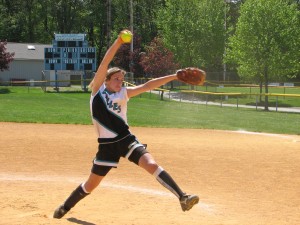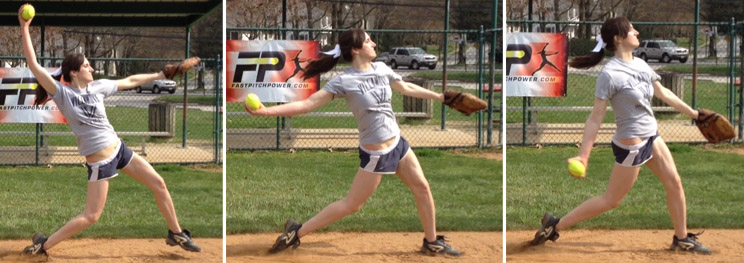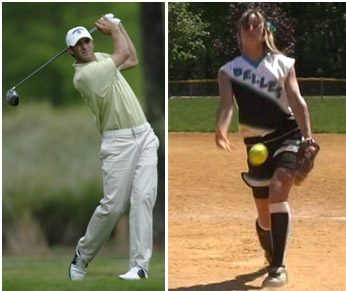The Personal Trainer’s Guide to Softball Pitching
If you’re a fitness professional who trains athletes, stop for a second. You don’t need new exercises, equipment, or certifications. What you DO need is to learn how to communicate what you already have to offer on your athletes’ terms. Speak their language. If you train softball pitchers, this post is exactly what you need.
Here is a breakdown of softball pitching mechanics, translated so fitness professionals can follow along. After reading this post you should be able to 1) identify the critical mechanics and capacities of softball pitching, 2) communicate your basic understanding of these mechanics to a softball pitcher or coach and most importantly 3) relate these mechanics and capacities to the exercise selection and design of your strength and conditioning program.
I find it’s easiest to dissect windmill mechanics into four phases; however, I should acknowledge that researchers have further divided the sequence to examine forces on the pitching arm at different points throughout the motion.
- Variable
- Load/prep of the back leg to drive off rubber
- Drive off rubber with back leg, propelling the body in a straight line toward home plate
- Pitching arm will travel from 6 o’clock to 12 o’clock (between 160-180 degrees of flexion/abduction)
- Body turns toward third base (for a right-handed pitcher)
- Lead leg lands with knee slightly flexed (around 30 degrees)
- Lead foot lands internally rotated (around 30 degrees) toward the third base side
- At lead foot contact, pitching arm will be at 12 o’clock
- Lead arm points toward home plate

- Pitching arm travels (counter clockwise) from 12 o’clock to release very close to the plane of the body
- Elbow may be slightly flexed and elbow/wrist position will vary at release depending on the pitch thrown
- Lower trunk will rotate (20-45 degrees) toward home plate up to point of release
- Back leg slides (must maintain ground contract) in straight line toward lead leg
- Pitching arm (elbow/wrist) action is variable
- Back leg completes its slide, with the back foot contacting the lead foot
- Lower trunk completes its rotation, squaring off to home plate (similar to other sports)
- Pitcher should finish “tall” into lead leg
- Pitcher will adjust back leg in order to prepare to field a batted ball



